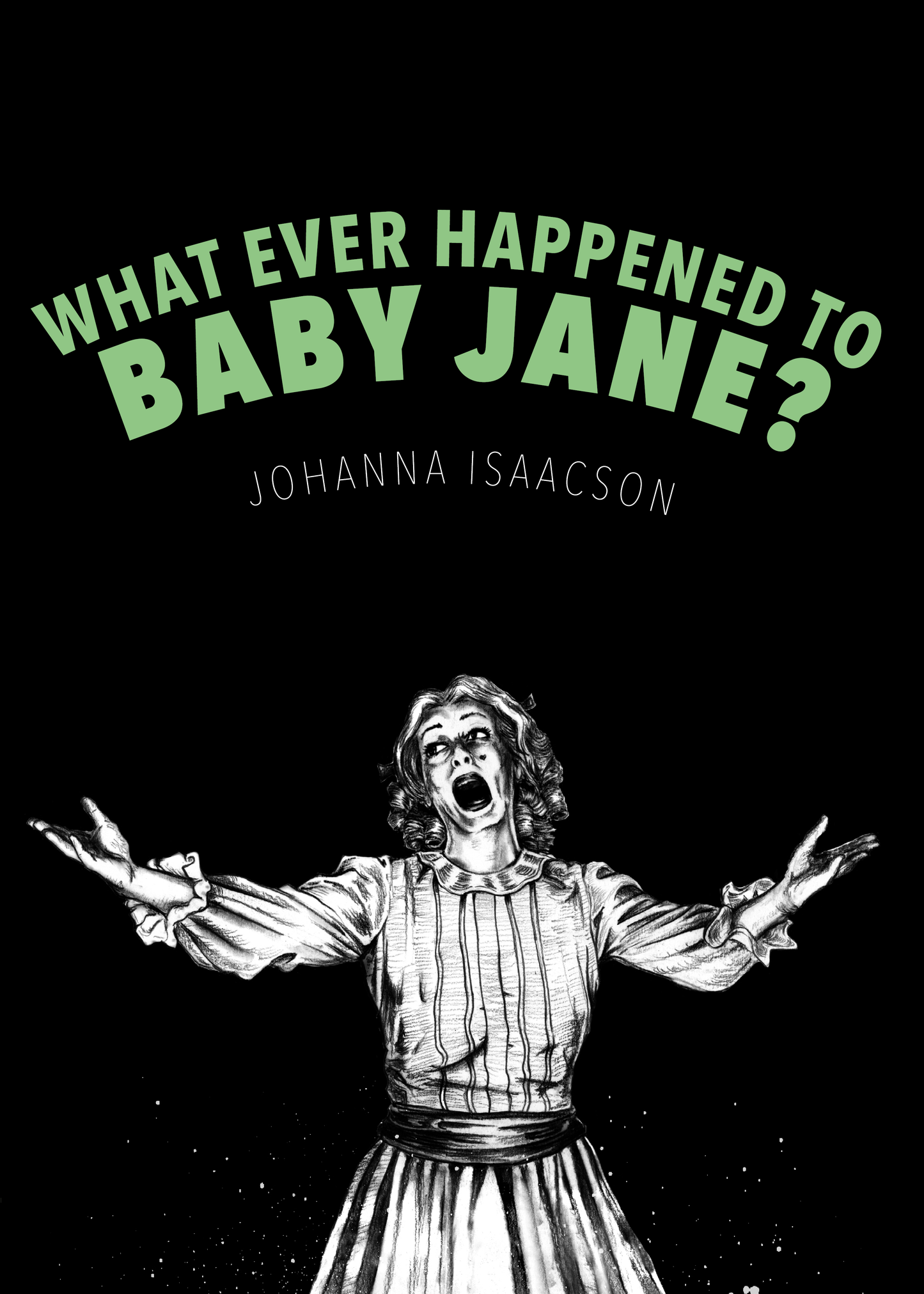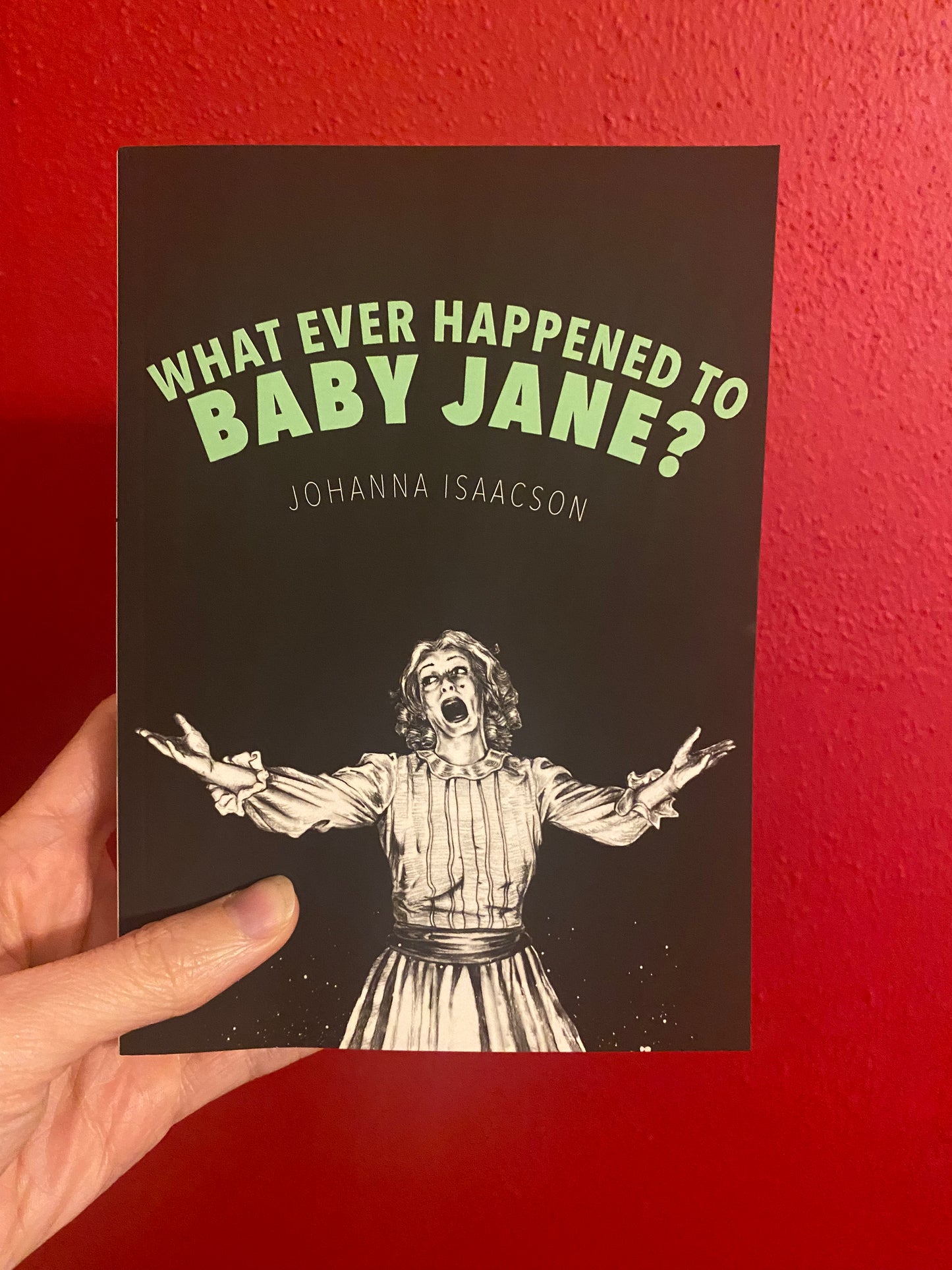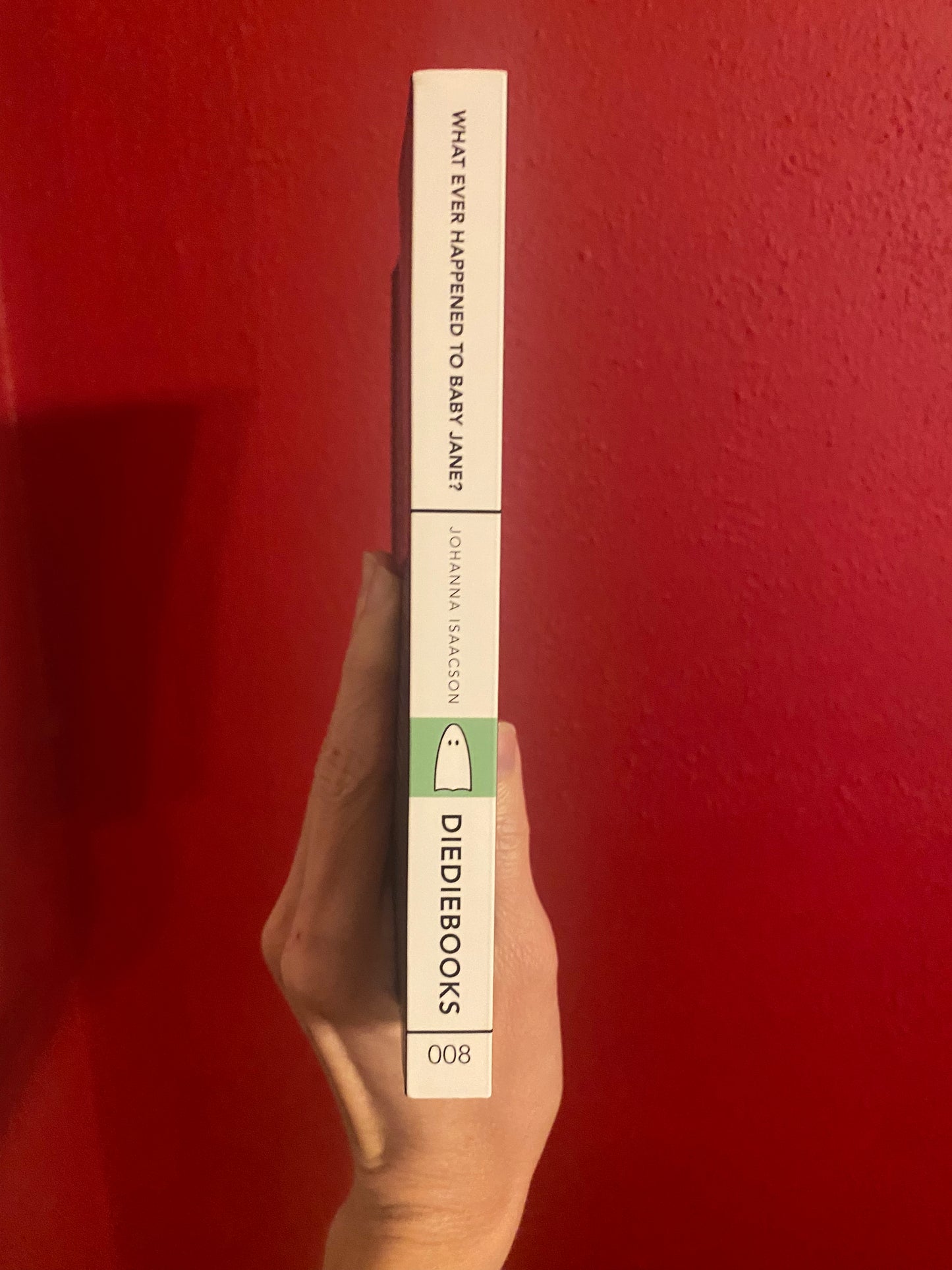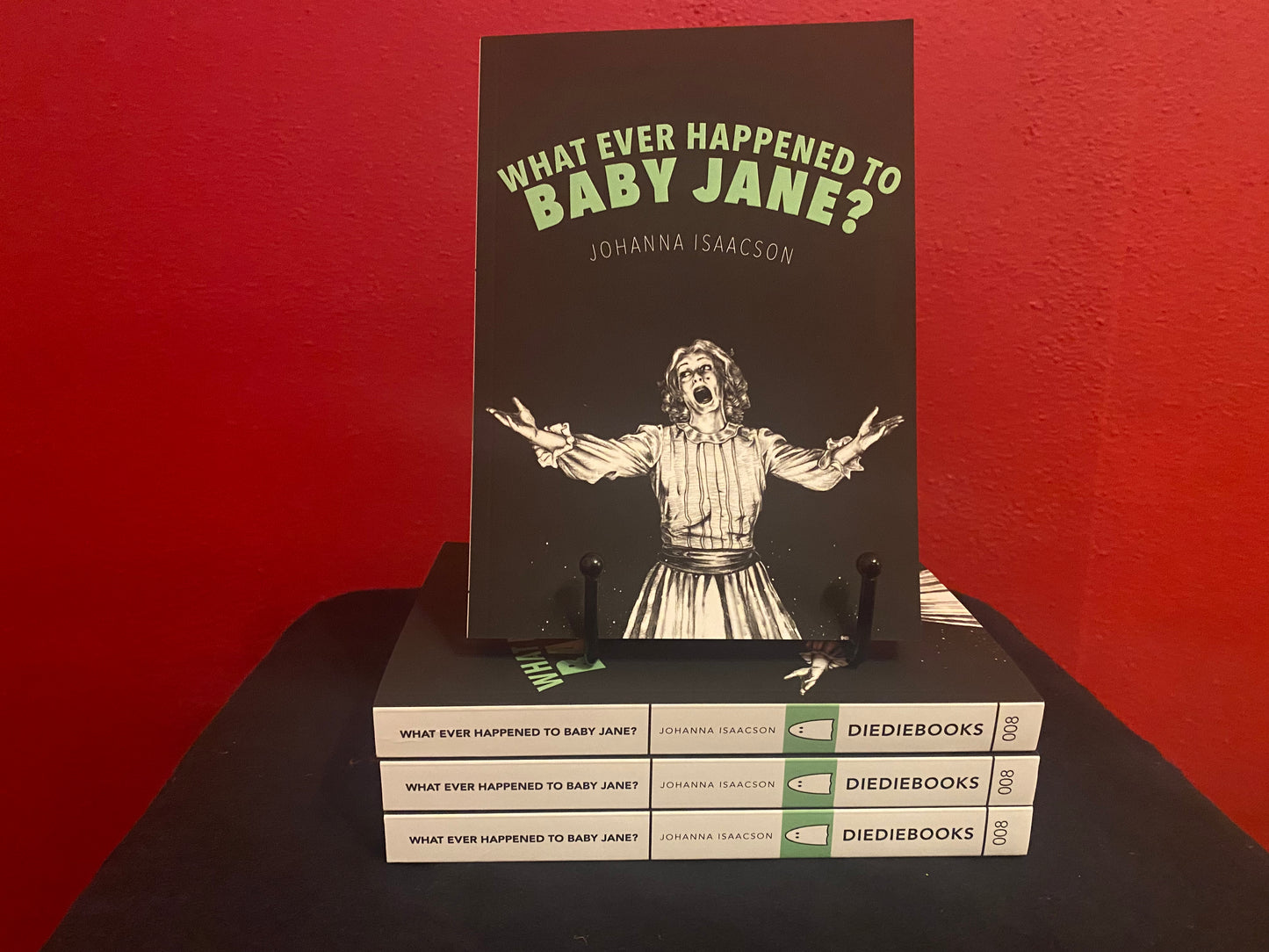What Ever Happened to Baby Jane? by Johanna Isaacson
What Ever Happened to Baby Jane? by Johanna Isaacson
Couldn't load pickup availability
For some, Robert Aldrich’s 1962 film What Ever Happened to Baby Jane?—which galvanized the hagsploitation genre through its depiction of a murderous feud between two deranged “old biddies”—is one long insult to older women. However, this reading ignores the political power of camp. The film’s “bad taste” excesses create space for its talented actors, Bette Davis and Joan Crawford, to perform monstrosity as pitch-black humor and rage toward a society that devalues older women. Read this way, the film’s saccharine children, creepy dolls, emotional pyrotechnics, cat fights, and displays of madness are theatrical refusals of a patriarchal society that wants its old women to shut up and disappear until it’s time to serve the milk and cookies.
Offering a close reading of the film, its production, and its reception, alongside historically contextualized examinations of the lives, filmographies, and gossip surrounding the film’s actors and director, Johanna Isaacson’s What Ever Happened to Baby Jane? offers a detailed examination of the film’s cultural significance while tracing its relevance for an anti-ageist feminism.
Ebook formats
Ebook formats
Ebooks are available in EPUB, MOBI, and PDF formats.




Praise for What Ever Happened to Baby Jane by Johanna Isaacson
-
Payton McCarty-Simas, author of That Very Witch: Fear, Feminism, and the American Witch Film
"With this book, Isaacson makes a raucous, forceful case for the feminist bonafides of the ‘camp crone’ with a wicked humor befitting this cult film. Stripping off layers of previous interpretation like layers of Bette Davis’ pancake makeup, Isaacson’s work here is an incisive, engaging, and cogent scholarly addition to the cult of Baby Jane."
-
Erin Harrington, author of Women, Monstrosity, and Horror Film: Gynaehorror
"Johanna Isaacson’s What Ever Happened to Baby Jane? is incisive, funny, bitchy, queer, nuanced, and very, very smart. This detailed, well-researched book unpacks the complexities, contradictions, and legacies of this iconic film and those who made it. In doing so, it shines a necessary light on the cruel ways in which our patriarchal society continues to restrict the lives and careers of women, but it also offers up some subversive ways to resist. This is essential reading for film buffs, horror fans, and all those nursing a desire to age disgracefully."
Excerpt from What Ever Happened to Baby Jane by Johanna Isaacson
Opportunity with a Price
Click here to read a sample of the chapter
While thousands of magazine puff pieces claim we can now grow older with grace, retaining our beauty and independence into our 60s, 70s, or even 80s, really, we know aging is a game that can’t be won, especially by women. But I’ve already put myself to sleep writing that obvious statement. Luckily, we have hagsploitation to save us from sanctimonious proclamations on the topic.
Instead of righteous platitudes, this genre, which came into being with Baby Jane, treats us to twisted, campy manifestos disguised as lurid horror. In these films, women don’t bother to beg for their rights or rationally claim their place in society, but instead gleefully act out taboo desires and nightmares.
As many have noted, we can’t fully separate the characters Jane and Blanche from the actresses who play them. Bette Davis and Joan Crawford ended up in this film because
they were “too old” to be cast in anything else. They were also emblems of the waning Hollywood Golden Age, often periodized as lasting from 1913 to 1962, the year Baby Jane was released. This ending was marked by the unraveling of Classical Hollywood’s formal and moral cinematic codes that reinforced rigid class, gender, and racial hierarchies. As the big five studio system slowly dissolved, so did the relevance of Davis’s and Crawford’s carefully constructed personae.
Through the ’20s, ’30s, ’40s, and ’50s, both Davis and Crawford shapeshifted into constantly morphing masquerades of glamor and beauty, mobilizing their talent, their “natural gifts” such as bone structure and measurements, and their work ethic to adapt to changing circumstances. But here came the early ’60s, and they could no longer pass as conventional stars.
When Crawford read Henry Farrell’s novel, What Ever Happened to Baby Jane?, depicting two aging actresses locked in a death struggle, the same instinct that sustained a decades-long career told her this was the vehicle for yet another renewal, and that she must recruit her so-called nemesis, Bette Davis, to act opposite her. Director Robert Aldrich, with whom she had worked on Autumn Leaves, was keen on the project as well. Aldrich, considered a brilliant auteur in the ’50s, was himself in danger of becoming another casualty of the waning studio system, and his gut was telling him that this sensationalistic, gothic tale of perverted dreams would help him stay in the game, even as the game itself was transforming.
The film’s wild success would unambiguously renew Aldrich’s career. But for Crawford and Davis, opportunity came with a price. To shine again they had to foreground their tarnish, cashing in on glamorous careers through self-parody.
Reviews for What Ever Happened to Baby Jane? by Johanna Isaacson
-
Steven Shaviro, The Pinocchio Theory
Read review"[Isaacson] deals head-on with the film itself, in terms of both content and form, as well as with the dilemma faced by women who are no longer young –a kind of entrapment that the movie at once dramatizes, exploits, and exemplifies."

Johanna Isaacson writes academic and popular pieces on horror and politics. She is a professor of English at Modesto Junior College and an editor of Horror Studies and Blind Field Journal. She is the author ofThe Ballerina and the Bull (2017), Stepford Daughters (2022), andSisters (forthcoming), has published widely in academic and popular journals, and runs the Facebook group “Anti-capitalist Feminists Who Like Horror Films.”




